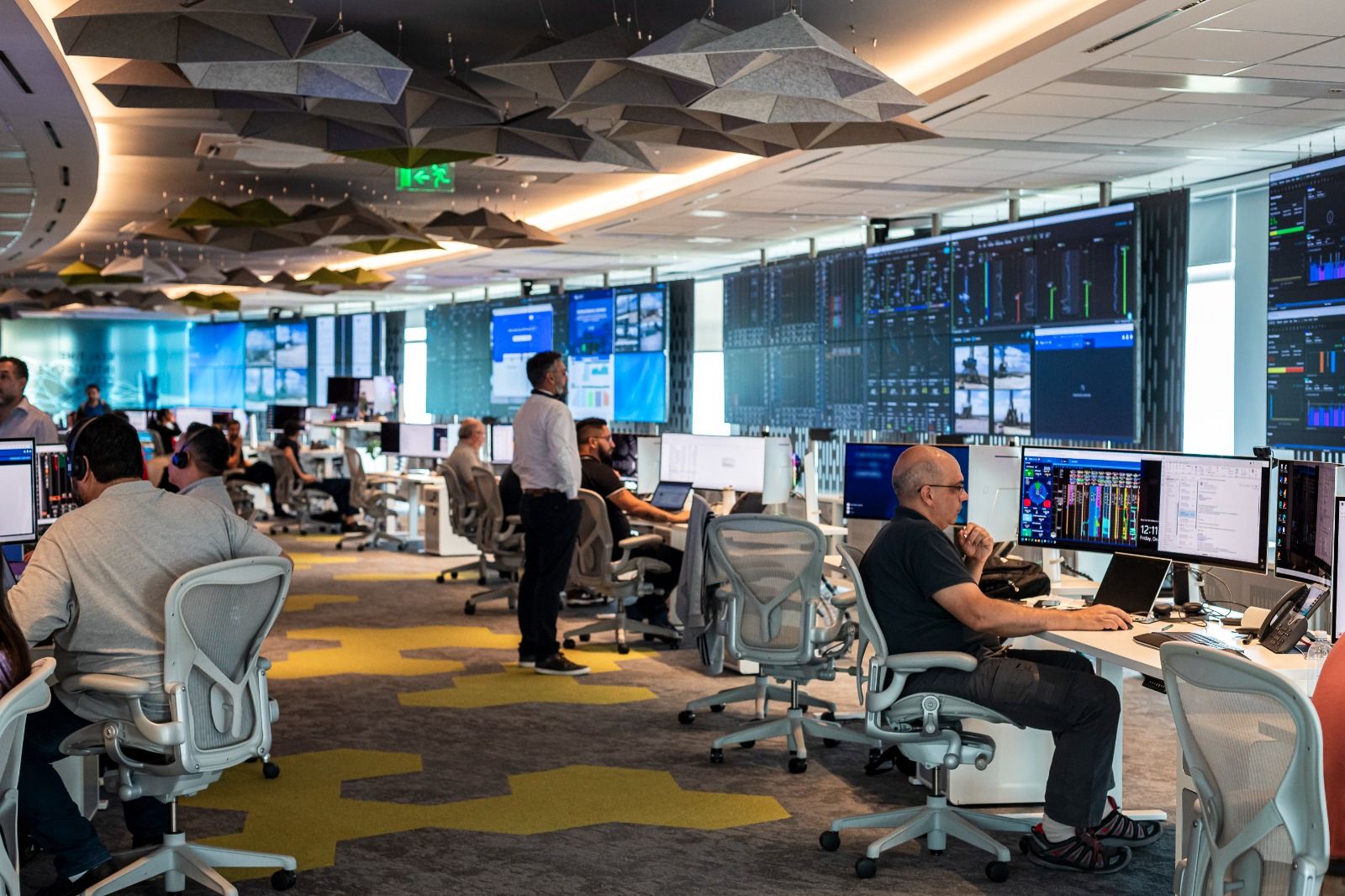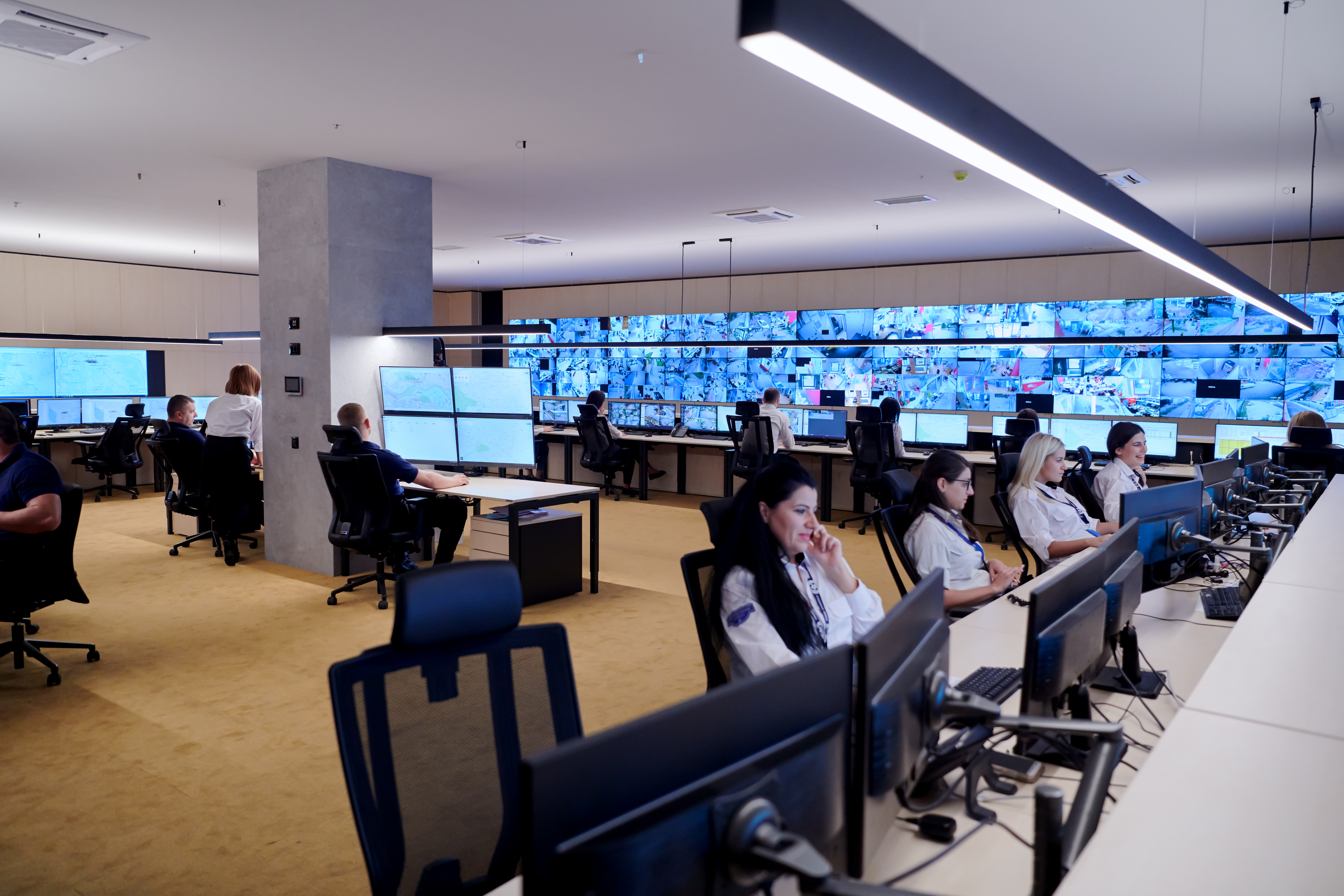
-







-






Latest posts

20 de March de 2025
Share:

Florencia
AV & Collaboration Specialist
Monitoring centers have become a strategic pillar for companies and institutions seeking to manage real-time operations, optimize resources, enhance security, and respond swiftly to incidents. In an environment where data flows constantly, having a monitoring hub allows for comprehensive visibility of physical and digital facilities, anticipation of critical events, and better-informed decision-making. Thanks to the integration of technologies such as the Internet of Things (IoT), Artificial Intelligence, predictive analytics, and Big Data, a modern monitoring room offers capabilities that go far beyond simple observation. It becomes the operational heart from which business continuity is controlled, supervised, and protected. A monitoring center, also known as a control room or monitoring hub, is a physical or virtual space from which all of an organization’s critical systems are managed. This includes monitoring security cameras, motion sensors, data networks, electrical systems, industrial equipment, logistics traffic, and more. This type of infrastructure can be used in various industries—from private security firms to local governments, as well as industrial plants, hospitals, banks, airports, retail, and transportation companies. Moreover, its modular design allows capabilities to scale according to growth needs, data volume, and the criticality level of each operation. One of the biggest benefits of control centers is their ability to provide a real-time global view of all connected systems. This results in a significant reduction in response times to failures, intrusions, or operational anomalies. For instance, a security monitoring hub can detect suspicious movements using intelligent video analytics and automatically send alerts to field personnel. This eliminates reliance on human observation alone, removes blind spots, and optimizes resource allocation. Monitoring rooms enable organizations to prevent incidents before they occur. Through technologies like smoke detectors, temperature monitoring, unauthorized access alerts, and automated response platforms, the risks of sabotage, fires, theft, or human error can be significantly reduced. In addition, these rooms play a key role in crisis management. In a well-equipped crisis room, decision-makers can quickly access all necessary information to coordinate actions and minimize operational impact. Beyond physical and digital security, ensuring the resilience of your secure communication infrastructure is paramount, especially for real-time voice and video transmissions that underpin critical operations. Centralizing process supervision helps eliminate redundancies, improve efficiency, and reduce operational expenses. Monitoring centers help detect deviations, optimize logistics routes, automate repetitive tasks, and cut down on energy consumption—among many other tangible benefits. When a control center is integrated with business management platforms (ERP, CRM, SCADA), response and analytical capacity are further enhanced, enabling faster, more informed decision-making. Data-driven decisions are more accurate, consistent, and aligned with business goals. A high-level monitoring center enables the continuous collection, processing, and visualization of operational information. For example, if a retail chain detects an anomaly in the electricity consumption pattern at one of its stores, it can act immediately to correct it—avoiding losses or greater risks. Predictive analytics also helps anticipate trends, optimize inventory, or plan preventive maintenance. Monitoring hubs can be customized based on the client’s specific needs. Whether you need a solution focused on urban security, industrial processes, energy infrastructure, or data centers, their modular design allows for new functions to be added or coverage expanded without a full redesign. They can also operate locally or remotely, with cloud backup, facilitating deployment in distributed environments or those requiring high availability. In a world where information and security are critical assets, implementing a monitoring center or control center is not just an advantage—it's a strategic necessity. This kind of infrastructure strengthens organizational resilience, improves decision-making, protects resources, and boosts long-term productivity. At Newtech Group, we design comprehensive monitoring center solutions tailored to each industry, combining cutting-edge technology with our experience in operational implementation. Our approach is rooted in security, continuity, and performance. Contact us today and discover how a high-performance monitoring hub can transform your business and prepare it for the challenges ahead.
What is a Monitoring Center and How Does It Work?
Key Benefits of Implementing a Monitoring Hub
1. Real-Time Supervision and Full Control
2. Business Security and Risk Prevention
3. Operational Optimization and Cost Reduction
4. Data Analysis and Smart Decision-Making
5. Scalability and Customization by Industry
Comparison: Crisis Room vs. Monitoring Room vs. Control Center
Feature
Crisis Room
Monitoring Room
Control Center
Main Objective
Managing unexpected and critical situations
Constant supervision of systems and security
Comprehensive coordination of real-time operations
Most Common Use
Emergencies, business continuity
Physical and digital security, surveillance
Production, logistics, critical processes
Technology Integration
Communications, visualization, protocols
Video surveillance, sensors, alerts
IoT, Big Data, AI, SCADA
Scalability
High, but protocol-specific
Medium-high, depending on surveillance needs
Very high, adaptable to multiple industries
Conclusion: Why Your Company Needs a Monitoring Center
Ready to Modernize Your Operations?
Share
If you are looking for advice on technological solutions
in videoconferences please write us!
"*" indicates required fields
© 2025 All rights reserved | newtechgroup.com